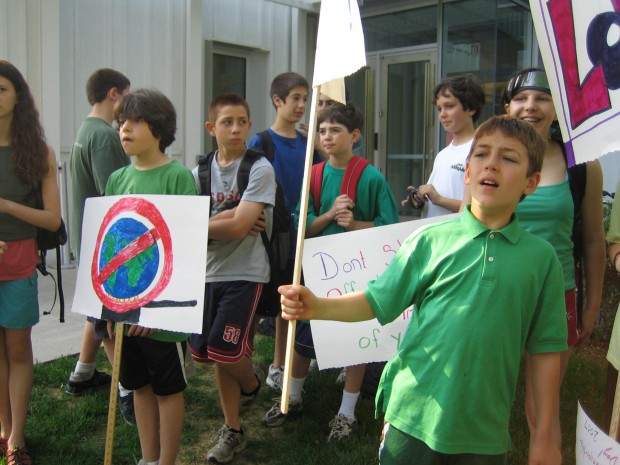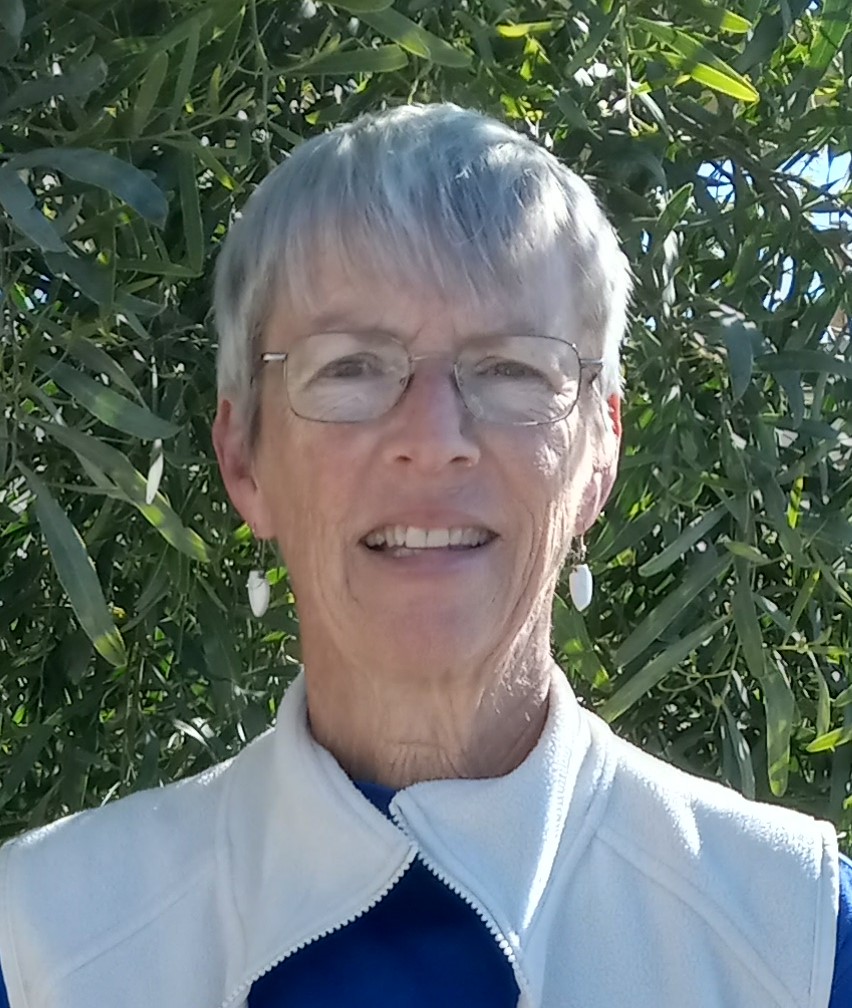Climate Change: Just Talk About It!

By Karen Schedler
 What is the best thing each of us can do about climate change? When asked this question, internationally acclaimed climate scientist Dr. Katherine Hayhoe (a Canadian now teaching at Texas Tech University) tells us, “Just talk about it!” So, what is keeping us from teaching this critical concept within our classrooms?
What is the best thing each of us can do about climate change? When asked this question, internationally acclaimed climate scientist Dr. Katherine Hayhoe (a Canadian now teaching at Texas Tech University) tells us, “Just talk about it!” So, what is keeping us from teaching this critical concept within our classrooms?
In May 2023, Yale Climate Connections published results of an NAAEE survey indicating that teachers embrace the idea of teaching climate change; however, they do not feel adequately prepared to teach this topic and may be concerned about pushback from parents [1]. This is not surprising. An earlier NSTA survey summarized their dilemma this way: “Teachers are facing pressure to not only eliminate or de-emphasize climate change science, but also to introduce non-scientific ideas in science classrooms.” [2]
For those of us in the USA, we have additional support for infusing this topic into classrooms. A 2019 NPR/IPSOS poll reported significant support for teaching this in schools: “More than 80% of parents in the U.S. support the teaching of climate change. And that support crosses political divides. Whether they have children or not, two-thirds of Republicans and 9 in 10 Democrats agree that the subject needs to be taught in school.” [3]
If you have not yet infused climate change into your curriculum, Green Teacher has a number of articles and webinars ready for use by educators at any level, whether within a formal or a nonformal educational setting. The following are just a sampling of nearly 50 resources addressing this topic – all ready and waiting to be used.
Essentials for Teaching Climate Change provides a simple-to-use overview of how to approach this topic at any grade level. Here you can find answers to commonly-asked questions:
- What key messages motivate the public?
- What are effective (and ineffective) strategies for addressing controversy?
- What are some high-impact behaviors (beyond the 3R’s) students can employ to ‘fix’ this issue?
If you have been reluctant to teach climate change for any reason, this article is a solid place to begin your planning.
Is climate change good for us? Designed for primary and middle-school students, this activity can easily be adapted for any audience. Students are asked to consider how changes in climate could affect them personally and to broaden their focus by looking at the big picture: how might these changes affect their community? Students complete a table indicating their ideas of what will happen if there are more or less rain and snow events, higher or lower temperatures, and more – all of which encourage students to employ critical thinking.
Where Does Our Food Come From? introduces us to a topic that most people rarely consider. This gap in our knowledge of where and how our food is produced and how that contributes to climate change should come as no surprise: we are now an urban rather than an agrarian society, and our disconnect with the land produces a naivete that must be addressed if we are to live a lifestyle that minimizes our ecological footprint. Forbes reports that research from Europe (2021) indicates that more than a third—34%—of all man-made greenhouse gas emissions are generated by food systems. Where Does Our Food Come From? helps learners recognize how our food decisions ultimately impact global climate change via a multi-part lesson that can be adapted to any age or grade level while incorporating STEAM (science, technology, engineering, arts and math) activities that address multiple subject area standards.
Climate Change and Regional Geography Middle school students will find an excellent correlation between science and social studies (geography) in this lesson as they apply the science behind climate change to their individual community. Encouraging students to look more closely at their immediate surroundings fosters a stronger sense of lace while also viewing the natural world through a more focused lens. Once they learn to observe nature more closely, the natural systems and cycles begin to make more sense and can help motivate environmental stewardship.
Climate Change Despair and Empowerment Activity Sequence assists secondary students in pulling together what they know about climate change, sharing their anxieties for the future, understanding they are not alone in their concerns, and preparing them to take action to minimize their fears. Through guided exploration through these, students eventually develop a sense of empowerment that the future IS theirs. They CAN make a difference!
In addition to 31 articles about climate change, Green Teacher also has a library of 16 webinars. The following three address the issue of energy, which is the driving force behind our changing climate.
- Webinar #1 – A simple model for teaching the energy transition” (October 2021) explores a simple model for teaching about the current energy transition and the changes we will experience by 2030.
- Webinar #2 – Teaching about contrasting energy solutions (November 2021) addresses how future electricity systems of North America could be critically important to economic success and provides a structure to better understand challenges and opportunities we face in transitioning off fossil fuels to power our grids.
- Webinar #3 – How do our current needs fit into the transition? (November 2021) investigates how we can transition into a low-carbon future while addressing a plethora of challenges to such a massive transition away from fossil fuels and fostering the opportunities such a transition will present.
I urge those of you in the USA to watch for the revised NASA climate change framework for educators [4] is currently being updated and is expected to be released by the end of 2023. It will be an easy way to correlate your academic standards with the objectives identified as leading to climate change literacy.
 Karen Schedler’s love of the natural world led her into environmental education, where she worked in education programs at The Phoenix Zoo, the Arizona Game and Fish Department, and the Center for Teacher Success. She now consults as Natural Teacher LLC, serves as a certified Master Naturalist, and is a Faculty Associate at Arizona State University. She considers working on climate change to be her most urgent work.
Karen Schedler’s love of the natural world led her into environmental education, where she worked in education programs at The Phoenix Zoo, the Arizona Game and Fish Department, and the Center for Teacher Success. She now consults as Natural Teacher LLC, serves as a certified Master Naturalist, and is a Faculty Associate at Arizona State University. She considers working on climate change to be her most urgent work.
Endnotes
1 “Most teachers support teaching students about climate change, survey finds”, https://yaleclimateconnections.org/
2 NESTA 2011; Branch 2013; Branch, Rosenau, and Berbeco 2016
3 “Most Teachers Don’t Teach Climate Change; 4 In 5 Parents Wish They Did” https://www.npr.org/2019/04/22/714262267/most-teachers-dont-teach-climate-change-4-in-5-parents-wish-they-did)
4 NASA climate change framework (under revision at the time of this posting) https://www.climate.gov/teaching/climate)
Leave a Reply
You must be logged in to post a comment.










